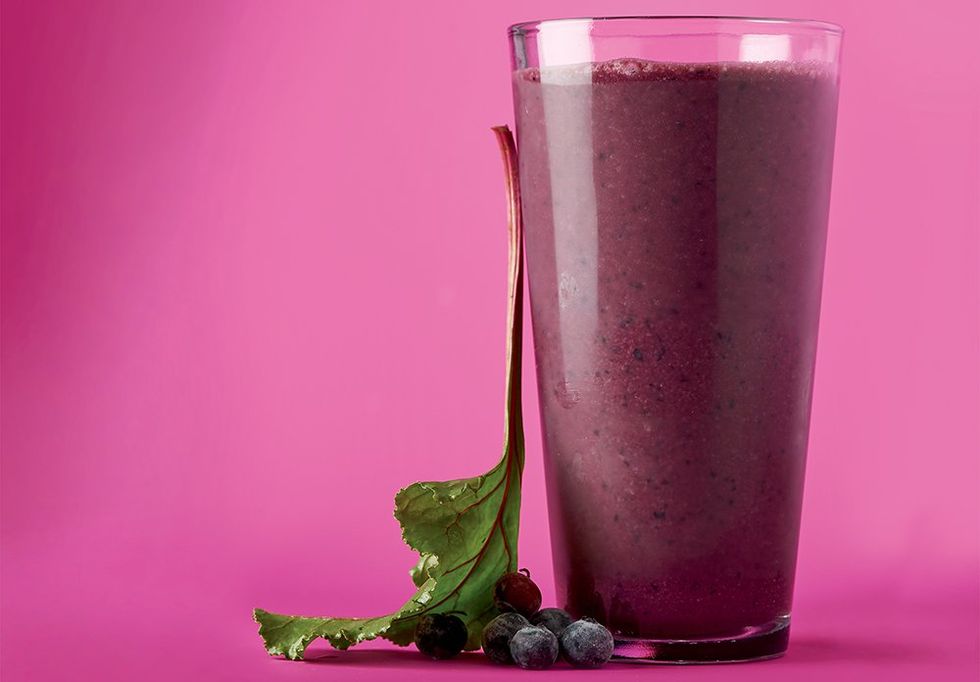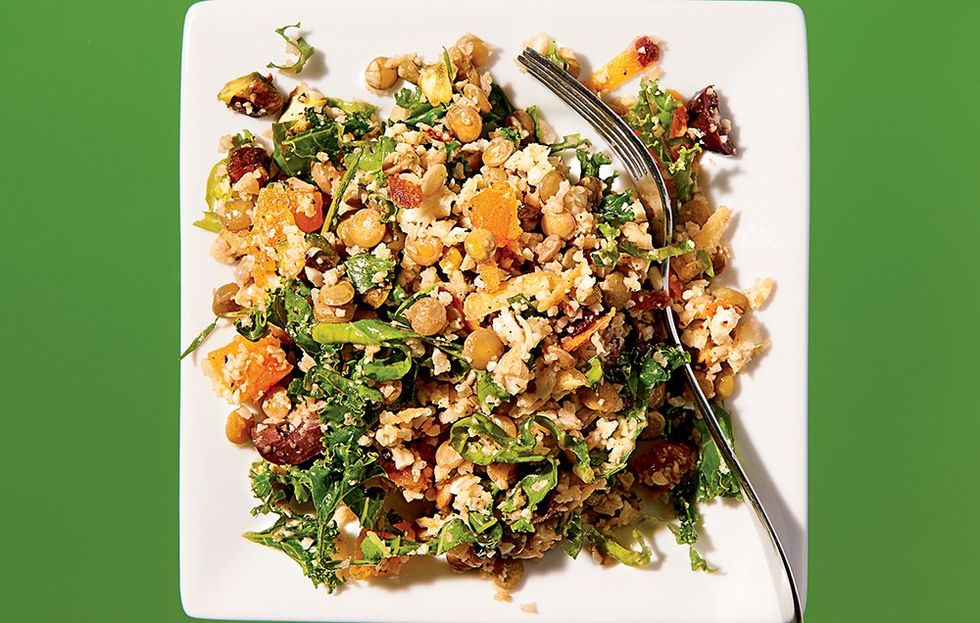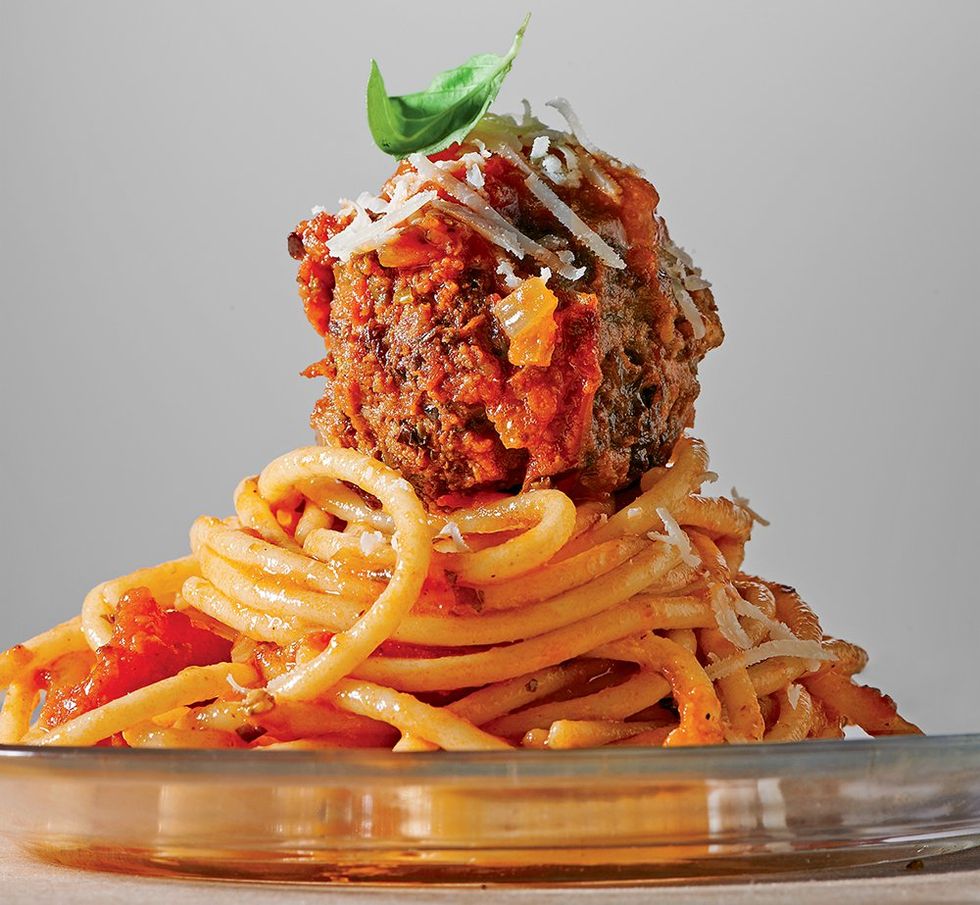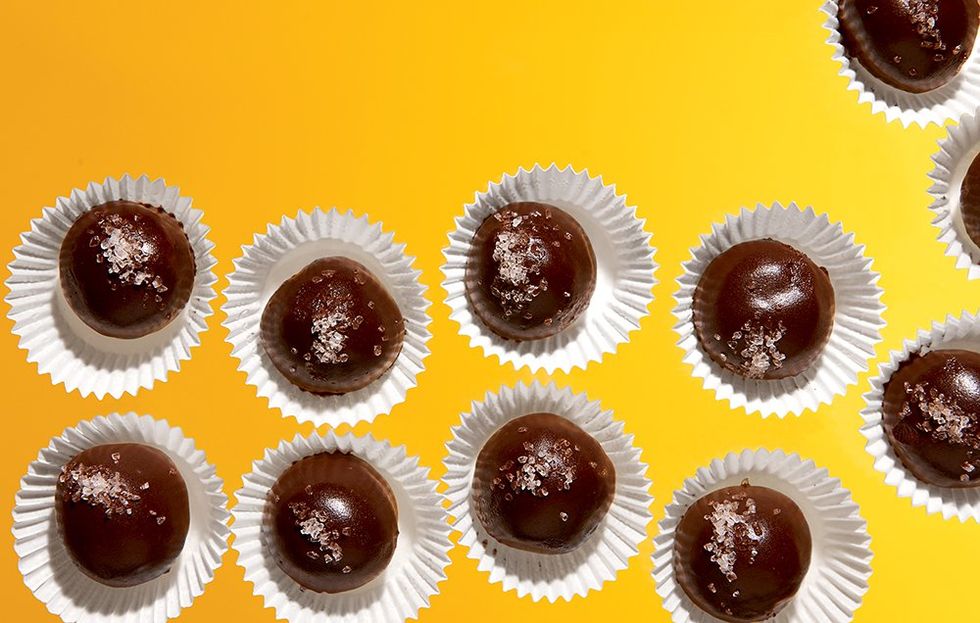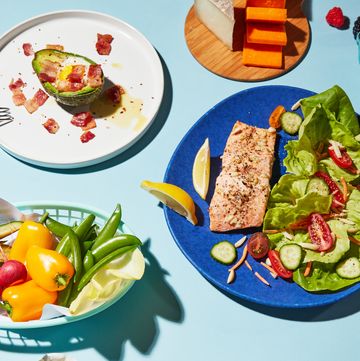We earn a commission for products purchased through some links in this article. Why Trust Us?
Run Fast, Eat Slow
Five delicious recipes from Shalane Flanagan and Elyse Kopecky’s new cookbook.
In their book Run Fast, Eat Slow, two runner friends in Elyse Kopecky and Shalane Flanagan—one a fit mom and trained chef, the other an Olympian who loves her food and just won the 2017 New York City Marathon—explain how to watch your times and weight drop by nourishing your hardworking body with unprocessed whole foods, local fresh produce, and organic meat. Bonus: The recipes are delish! Get your copy of the cookbook that’s in hot demand after Flanagan became the first American woman to win NYC in 40 years.
We all know what “run fast” means, right? Kick some @#*! It means not just surviving but also thriving in our insanely fast-paced lifestyles that don’t seem conducive to having the time (or energy) to cook.
But what do we mean by “eat slow”? It represents a way of eating that includes preparing nourishing meals from scratch, sitting down at a table instead of eating on the go, enjoying food in the company of friends and family, seeking out foods that were grown or raised with care, and tuning in to what our bodies need to thrive.
Although runners are often put on a pedestal as the epitome of fitness, we know all too well that we are not immune to serious health issues. Convenience foods, including bars, gels, and sports drinks, not only lack real nutrition, but they’re also high in refined grains, processed sweeteners, industrial oils, and artificial ingredients. For runners who are constantly breaking down their bodies during intense training sessions, nutrient-dense foods are critical to faster recovery times.
“When coaches and athletes are asked what is the major contributor to good athletic performance, they often say things like VO2 max, training load, or a particular type of training,” says Ron Thompson, Ph.D., coauthor of Eating Disorders in Sport. “But a major contributor to good athletic performance is good health, and the major contributor to good health (other than genetics) is good nutrition. The well-nourished athlete will not only perform better, but will perform better longer.”
Shalane and I have shared a love of good food since we met in 2000 as anxious freshmen on the cross-country team at the University of North Carolina. (Although our definition of “good” has definitely evolved over the years!) After graduation we both moved west to Portland, Oregon—Shalane to run for Nike, me to work for Nike Running—so our paths had stayed very much intertwined until I moved abroad, and then came back to the United States to attend culinary school in New York. In August 2013, we reunited in Portland—over a meal, naturally! “Indulgent nourishment” is how we define our way of eating. We know our hardworking bodies need substantial fuel, so we indulge in our favorite whole foods. By filling up on the healthful foods we love and not obsessing over calorie counts, carbs, or fat, we’re able to eat in tune with what our bodies need. Real food allows the body to function optimally without weight gain.
All of our recipes were crafted to maximize flavor and nutrition and to minimize inflammation, digestive distress, and toxins. They were vetted by an incredible team of runners, including a high school cross-country runner, an ultramarathoner-CEO, a Ph.D. physicist, a running store owner, a breast cancer oncologist, and a dad inspired to cook healthier for his active family. (You meet, run, and eat with Shalane and Elyse at our 2017 Runner’s World Women’s Getaway at the Westin Riverfront Resort & Spa at Beaver Creek Mountain in Colorado! Register now for an amazing weekend that will help you recharge your running life._
Best of all, Shalane, despite her crazy training and travel schedule, road-tested every single recipe. She found that her racing weight came naturally—no deprivation needed. She was enjoying food more than ever and was recovering faster from her grueling 24-mile training runs at 6,910 feet. Shalane went on to run a PR in the marathon, break her own American 10K road record, and qualify for her fourth Olympic team in the marathon. —Elyse Kopecky
* * *
Adapted from Run Fast, Eat Slow: Nourishing Recipes for Athletes, by Shalane Flanagan and Elyse Kopecky. Published by Rodale, owner of Runner’s World.
Watch Next

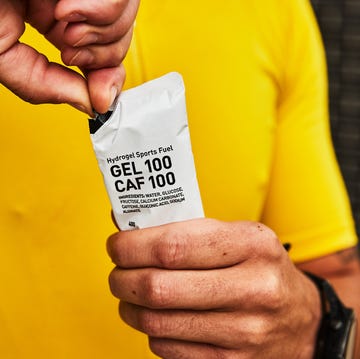
Should Runners Always Avoid Ultraprocessed Foods?

What Fruit is In Season Now?

Should You Eat Before or After a Run?

Signs of Vitamin D Deficiency

